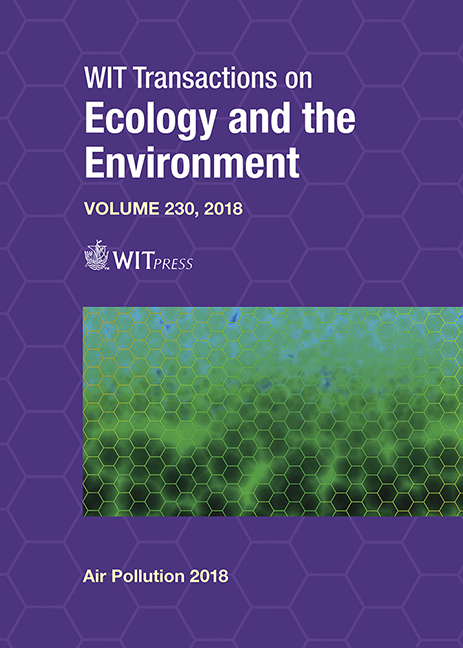POLLUTION ASSESSMENT IN URBAN AREAS USING AIR POLLUTION TOLERANCE INDEX OF TREE SPECIES
Price
Free (open access)
Transaction
Volume
230
Pages
8
Page Range
367 - 374
Published
2018
Paper DOI
10.2495/AIR180341
Copyright
WIT Press
Author(s)
VANDA ÉVA MOLNÁR, BÉLA TÓTHMÉRÉSZ, SZILÁRD SZABÓ, EDINA SIMON
Abstract
Air pollution has a large impact on the biochemical and morphological parameters of plants, and also decreases their growth and overall health. Therefore, biomonitoring is a reliable and cost-effective method to assess air quality. The tolerance of plant species can be assessed with the use of Air Pollution Tolerance Index (APTI), which is calculated from ascorbic acid content, relative water content, leaf extract pH, and total leaf chlorophyll content of tree leaves. In this study, we reviewed published studies from several countries around the world about APTI. Performance of APTI was also evaluated comparing industrial, roadside and urban areas. In our work, APTI of Tilia sp. and Celtis occidentalis were used and evaluated in Debrecen city, Hungary. Leaf samples were collected from 12 areas in the city. Similar to earlier studies, ascorbic acid content was determined by titration with iodine solution. Chlorophyll was extracted from leaf samples with ethanol, and it was measured using spectrophotometric analysis. Relative water content was measured by the weight method. Comparison of selected studies showed that China and India are the most polluted countries and they had plant species with the highest APTI values. Lowest APTI was reported from Iran which is one of most air-polluted regions in the world. In Hungary, APTI was moderate compared to other countries. The tolerance of plant species at different study sites decreased in the following order: industrial > roadside > urban areas. This suggests the best conditions for sensitive species’ development and growth in urban areas, while the presence of industrial activities in certain areas demands higher tolerance from plants.
Keywords
ascorbic acid, biomonitoring, leaf extract pH, relative water content, total leaf chlorophyll, tree leaves





